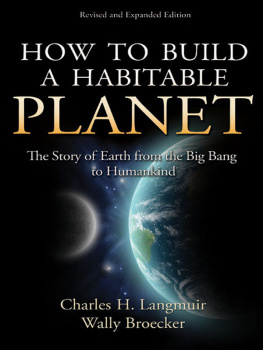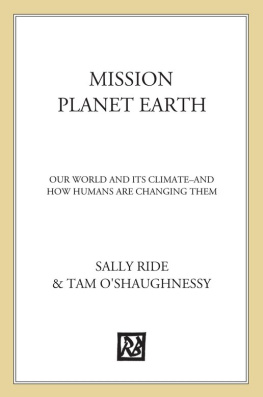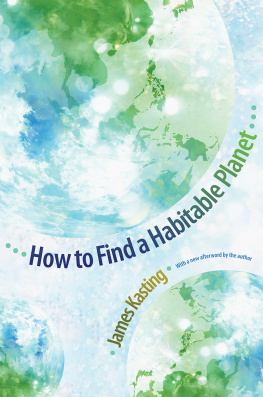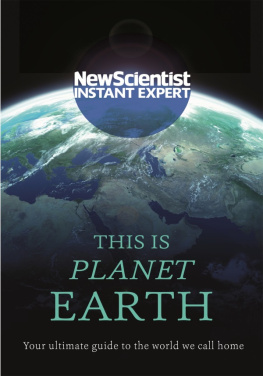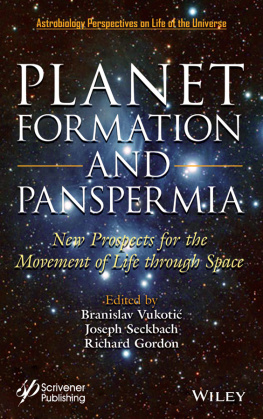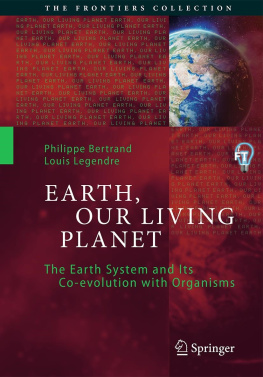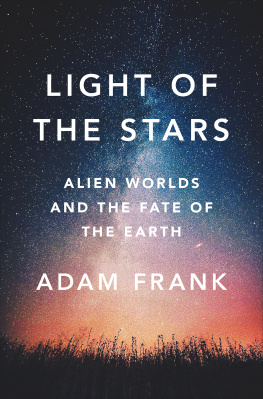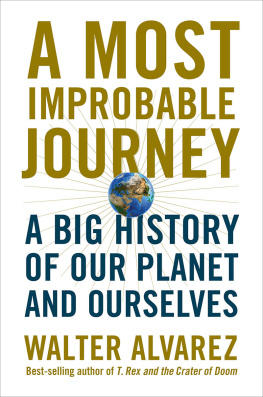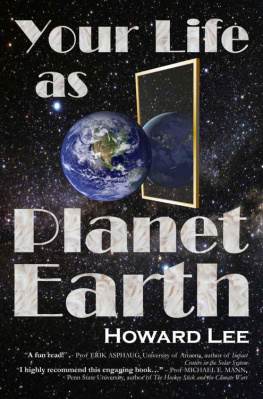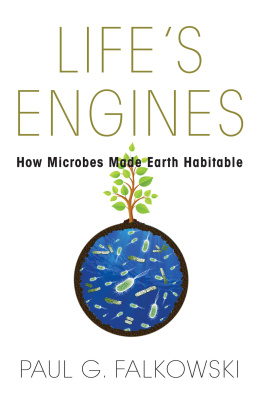

HOW TO BUILD A HABITABLE PLANET
Copyright 2012 by Princeton University Press
Published by Princeton University Press, 41 William Street, Princeton, New Jersey 08540
In the United Kingdom: Princeton University Press, 6 Oxford Street, Woodstock, Oxfordshire OX20 1TW
press.princeton.edu
All Rights Reserved
ISBN 978-0-691-14006-3
Library of Congress Control Number: 2012930678
British Library Cataloging-in-Publication Data is available
This book has been composed in Minion Pro with Gabriola
Printed on acid-free paper
Printed in the United States of America
10 9 8 7 6 5 4 3 2 1
CONTENTS
PREFACE
This book is a revised and expanded version of the popular first edition of How to Build a Habitable Planet by W. S. Broecker, published by Eldigo Press in 1984. Many new discoveries have emerged in the last twenty-eight years. As of 1984, dark energy and dark matter were not yet discovered, the ocean ridges were barely mapped, hydrothermal vents on the sea floor were barely known, the Antarctic ice core had not been drilled, the snowball Earth hypothesis had not been fully formulated, global warming was not yet an urgent topic, and no extrasolar planet had been discovered. The first edition also did not have any discussion of life or Earth history, the rise of oxygen, and little discussion of volcanism and the role of the solid Earth in habitability. This edition includes the new discoveries and underrepresented topics of the original edition, while striving to maintain the conversational style of the original book, and attempting to be clear about what is known and what is unknown. We also emphasize a systems approach to the history and understanding of our planet, and emphasize the linkages of all parts of the Earth system, as well as the relationship of those parts to the solar system and universe. If there is one theme that we hope comes through in the book, it is of a connected universe in which human beings are an outgrowth and integral part.
The growth of knowledge and new topics have the unfortunate consequence of more than doubling the length of the book. We attempted to develop each topic from the ground up so that the material would be accessible to the interested reader who is not a scientist. deals with basic chemistry and would be a rapid read for those with basic knowledge of that field. Other topics, such as short-lived radionuclides, isochron dating, phase diagrams, and the oxidation/reduction reactions that are so central to life and its planetary consequences, are more challenging.
The writing process has benefited from countless interactions with friends and colleagues, not all of whom can be thanked adequately here, and some of whom are no doubt forgotten over the nine-year gestation of this edition. James Kasting provided a formal review of the entire book. Colleagues at HarvardRick OConnell, Ann Pearson, Andy Knoll, Francis Macdonald, David Johnston, and Peter Huybersgenerously reviewed individual chapters in their discipline. Dan Schrag made the useful suggestion of breaking up the Making It Comfortable chapter into two chapters, one dealing with the early Earth and the other with glacial cycles. Useful comments or discussions were also provided by Felicia Wolfe-Simon, Candace Major, Dave Walker, Dennis Kent, John Hayes, Chris Nye, Bob Vander Hilst, David Sandwell, Thorston Becker, Raymond Pierrehumbert, Wasserburg student, Steve Richardson, Stephane Escrig, Jeff Standish, and Sarah Stewart. Professional writers Kirsten Kusek and Molly Langmuir carefully edited the first half of the book, improving the writing and pointing out sections that were unclear for the nongeologist.
A course of the same name as the book has been taught at Harvard for six years, and students in that course have provided valuable feedback on material that was not clear or overly difficult. Teaching fellows in that course also contributed greatly to refining the content, particularly Sarah Pruss, Michael Ranen, Susan Woods, Allison Gale, Carolina Rodriguez, and Francis Macdonald. Jean Lynch-Stieglitz taught a course at Georgia Tech using the draft of the book submitted to the publisher for review, and dozens of her students provided feedback on individual chapters, pointing out those that needed substantial revision. Jean also gave valuable insight on what worked and what didnt in her use of the book.
Invaluable secretarial help was provided by Christine Benoit, Rady Rogers, and Olga Kolas. Raquel Alonso assisted with editing, searching for figures, drafting figures, and making sure everything stayed organized. Her help was indispensable.
All of these interactions and comments as well as many others have made the book much better than it would been otherwise. The remaining errors and shortcomings are the sole responsibility of the authors.
Supplementary materials for teaching and self-learning, including color versions of many of the figures and potential course syllabi, are available on www.habitableplanet.org.
HOW TO BUILD A HABITABLE PLANET
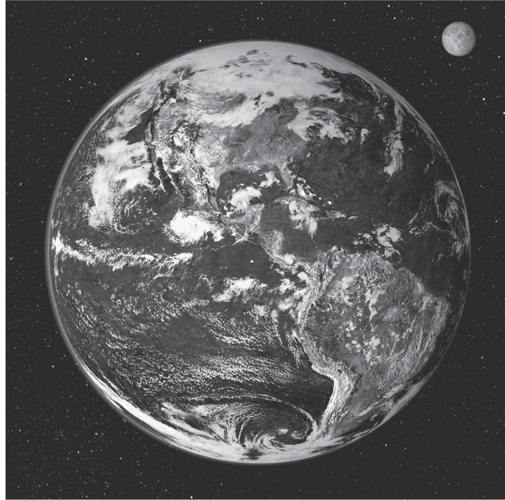
Fig. 1-0: Earth from space. (Courtesy of NASA; image created by Reto Stckli, Nazmi El Saleous, and Marit Jentoft-Nilsen, NASA GSFC)
CHAPTER 1
Introduction
Earth and Life as Natural Systems
At the moments when we are able to separate ourselves from our daily concerns and ponder deeply, most of us have encountered fundamental questions of our existence as human beings. Where do we come from? What happened before humans appeared on Earth? Where do the stars come from? Do we have a place in planetary evolution? Are there others like us out there somewhere?
These questions are common to all of us, irrespective of national origin or political persuasion. They are the stuff of myths, creation stories, philosophy, and religion throughout human history. Today major aspects of these questions are susceptible to rigorous scientific inquiry. In this book we explore these questions, the scientific story of creation, the history of the universe that has permitted planetary takeover by an intelligent civilization.
The story begins with the inception of our universe by the Big Bang, through the formation of the elements in stars, to the formation of our solar system, the evolution of our world that became home to life and ultimately to human beings who can question and begin to understand the universal processes from which we are derived. Viewed on the largest scale, this story is the central story of our existence. It relates us to the beginning, to all of natural history, and to everything we can observe. While this book has a primary aim to present some of the current scientific knowledge on these topics, a secondary aim is to encourage a mode of thinking that is often latent for ushow we are derived from and related to a larger world.
The approach to this understanding of the world we inhabit and to which we are inextricably linked requires a range of scales that is difficult for us to encompass, from the atomic to the universal. The story also cannot be told by reduction to its smallest parts. Relationships among the parts and evolution through time also are necessary, a systems approach to scientific understanding. From a systems perspective, stars, planets, and life have a set of properties in common that appear to be characteristics of many of the natural systems of which the universe is made.
Next page
